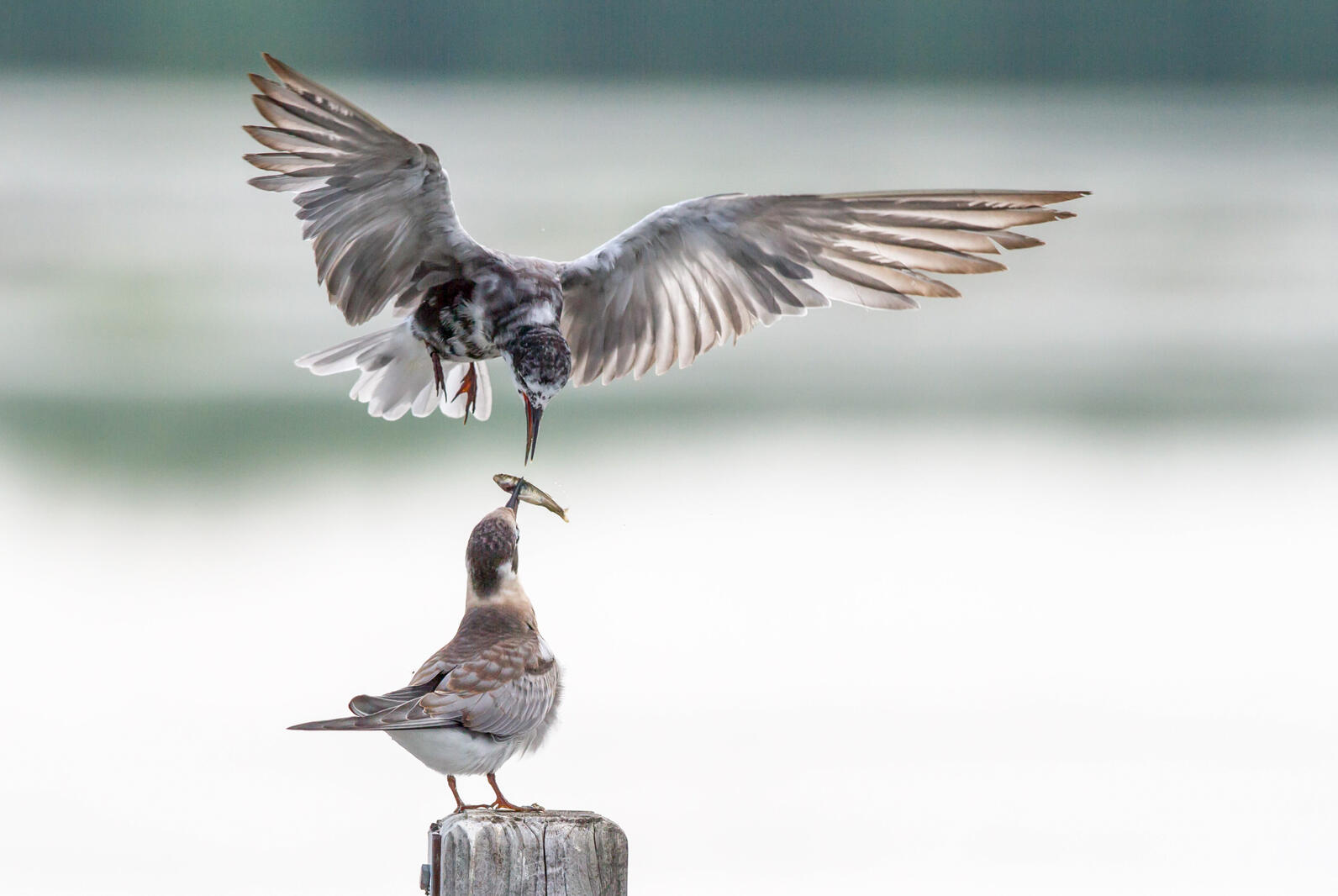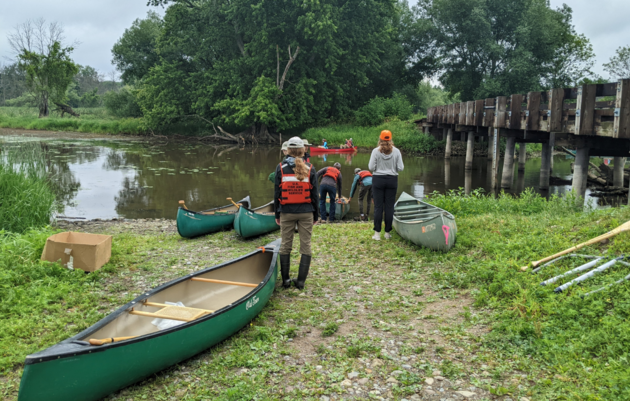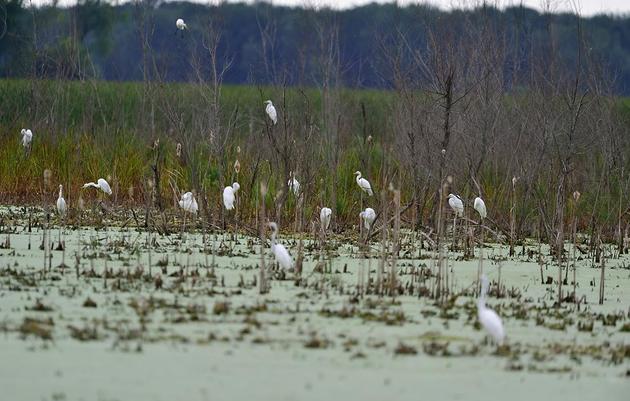Not many people get to spend a day at work on a scavenger hunt. For US Fish and Wildlife Service (USFWS) Biologist Linda Ziemba, it’s one of the best days of the year.
Every June, Ziemba climbs into her kayak and – along with around 11 other USWFS, DEC, and Montezuma Audubon Center staff, plus 12 youth interns and volunteers – paddles out into the 50,000 acre Montezuma Wetlands Complex to count nesting Black Terns.
“We get a general idea of where the terns are nesting in advance and then we paddle to those areas. When they start calling at us and circling us, we know we’re close to their colony or nests. We never try to count the actual nests because they’re at water level, so as soon as we get the ‘mobbing’ behavior we stop and count,” explains Ziemba. “This June, we counted 96 nesting Black Terns across eight marshes within the Montezuma Wetlands Complex. The last time we had a count over 90 was 1982.”
For Ziemba, “Black Terns feel like the Bald Eagle success story of our time, at least locally.”
Black Terns are an endangered species in New York State: According to the DEC, “Regular monitoring revealed that the number of colonial nesting sites in New York State decreased between 1989 and 2004 by 57%. This is primarily attributed to habitat degradation.”
At the Montezuma Wetlands Complex, the culprit was clear – an invasive plant species called Purple Loosestrife began dominating the landscape in the 1980s. The dense and woody plant out-competed native, emergent vegetation like Bur-reed and Soft-stemmed Bulrush. The emergent plants’ stems, flowers, and leaves rise above the water, and are used by Black Terns as nesting material.
In an effort to combat and kill the Purple Loosestrife, the USFWS and DEC tried keeping water levels high within the Complex, but doing so also prevented emergent plants from growing.
Finally, in the 1990s, a solution emerged. “Cornell came up with biological control agents. They released a leaf-eating beetle and root-eating weevil into the Complex, which targeted the Purple Loosestrife. The experiment was a success and slowly but surely, the native vegetation returned,” says Ziemba.

“This year, we saw Black Terns nesting at the Montezuma Audubon Center for the first time ever,” said Center Director Chris Lajewski. “It’s a testament to the quality of the wetlands. We confirmed five juvenile birds flying around, which says to me that there were multiple nests out here."
Given the incredible opportunities to study this exciting return of an endangered species, Chris looks forward to a time when the Montezuma Audubon Center will be able to bring on local youth from Clyde and Savannah as interns, or even employees.
“Bald Eagles and Black Terns are both able to nest at the Montezuma Wetlands Complex because scientists embraced new ideas. We want our ‘Next Generation of Conservationists’ program to incorporate fresh voices and perspectives into our work and empower diverse young conservation leaders to build a better world for birds and people.”
In addition to the Black Terns, Least and American Bitterns, Sora, Virginia Rail, American Coot, and other marsh species of conservation concern benefit from the water level and invasive species management happening across the Complex.







